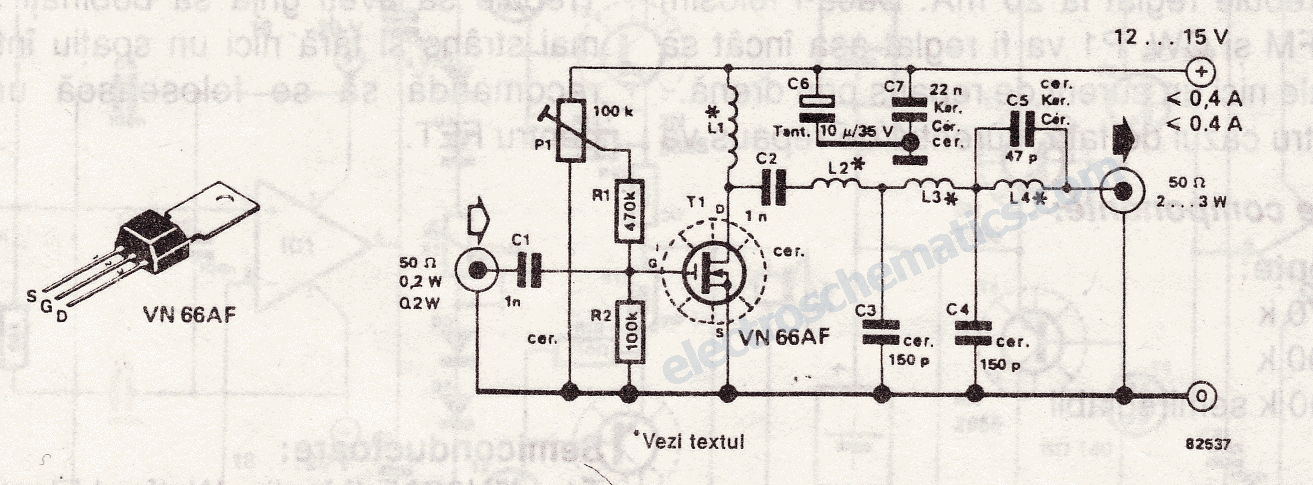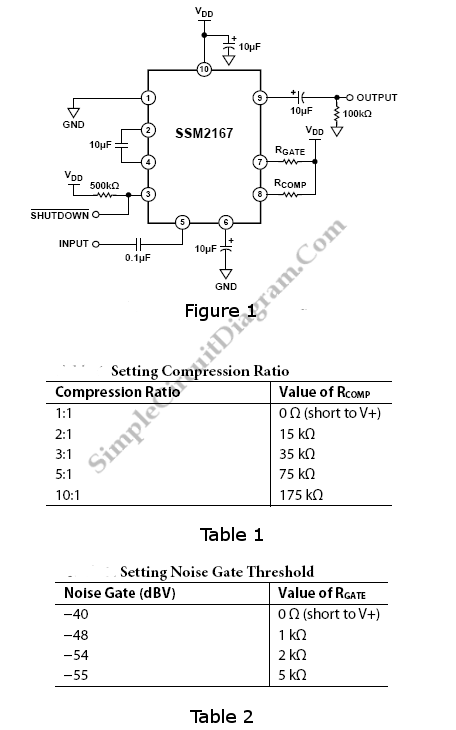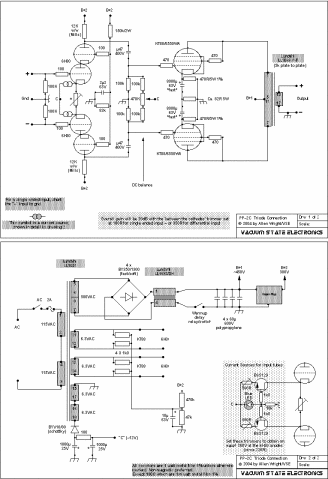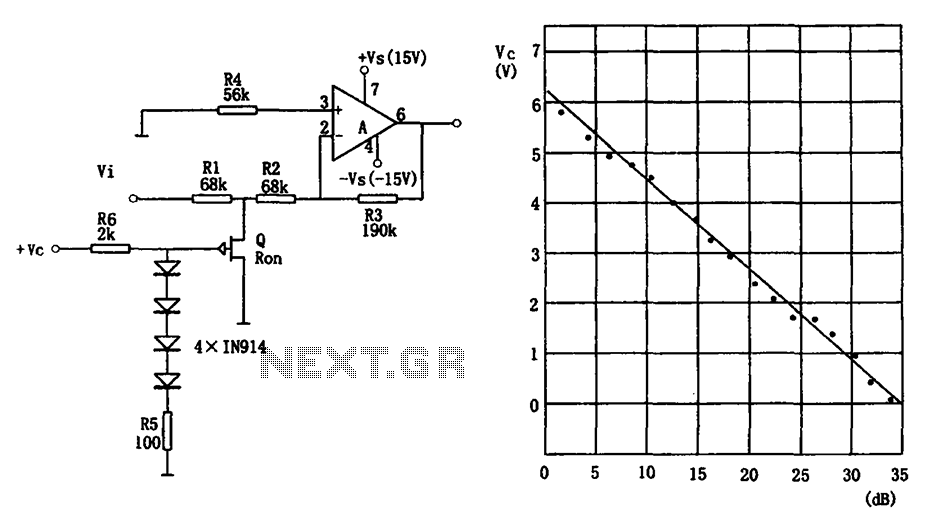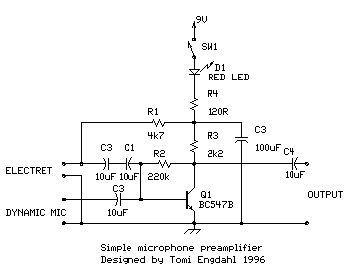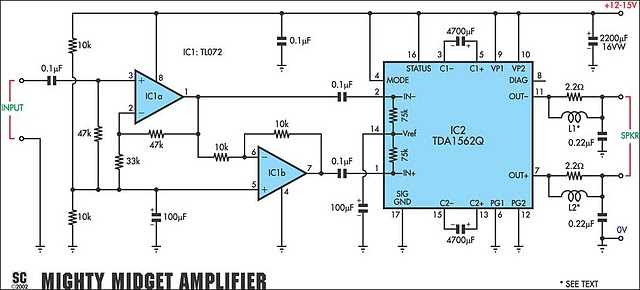
LM390 Bass Amplifier
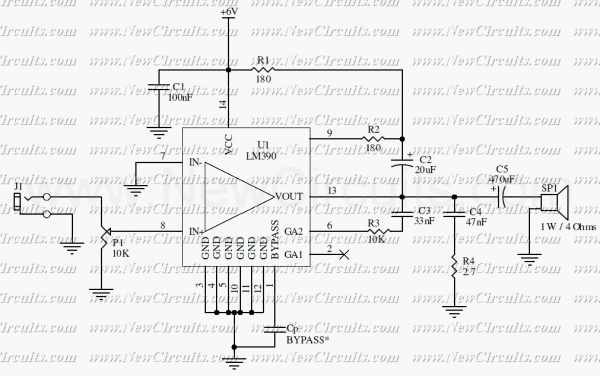
This circuit is a mono audio amplifier that will boost low frequencies as you see at the frequency response. The circuit is suitable for driving a subwoofer speaker for example. The output power of the circuit is about 1 Watt with a 4-ohm speaker.
The described mono audio amplifier circuit is designed to enhance low-frequency audio signals, making it particularly suitable for driving subwoofer speakers. The circuit typically employs a class D amplifier topology, which is known for its efficiency and compact size, making it ideal for applications where space and power consumption are critical.
Key components of the circuit may include an operational amplifier (op-amp) configured for gain, a low-pass filter to ensure that only the desired low frequencies are amplified, and a power stage that drives the subwoofer. The frequency response of the circuit is tailored to boost frequencies typically within the sub-bass range, often from around 20 Hz to 200 Hz, which is essential for reproducing deep bass sounds.
The power output of approximately 1 Watt is sufficient for small subwoofer applications, especially in compact audio systems. The circuit is designed to work with a 4-ohm load, which is a common impedance for subwoofers, allowing for efficient power transfer. Adequate heat dissipation mechanisms, such as heat sinks or thermal pads, are recommended to prevent overheating during prolonged use.
Additionally, the circuit may include features such as volume control, phase adjustment, and protection circuits to prevent damage to both the amplifier and the connected speaker. Proper PCB layout and component selection are crucial to minimize noise and distortion, ensuring high-quality audio output.This circuit is a mono audio amplifier that will boost low frequencies as you see at the frequency response. The circuit is suitable for driving a subwoofer speaker for example. The output power of the circuit is about 1 Watt with a 4-ohm speaker. 🔗 External reference
The described mono audio amplifier circuit is designed to enhance low-frequency audio signals, making it particularly suitable for driving subwoofer speakers. The circuit typically employs a class D amplifier topology, which is known for its efficiency and compact size, making it ideal for applications where space and power consumption are critical.
Key components of the circuit may include an operational amplifier (op-amp) configured for gain, a low-pass filter to ensure that only the desired low frequencies are amplified, and a power stage that drives the subwoofer. The frequency response of the circuit is tailored to boost frequencies typically within the sub-bass range, often from around 20 Hz to 200 Hz, which is essential for reproducing deep bass sounds.
The power output of approximately 1 Watt is sufficient for small subwoofer applications, especially in compact audio systems. The circuit is designed to work with a 4-ohm load, which is a common impedance for subwoofers, allowing for efficient power transfer. Adequate heat dissipation mechanisms, such as heat sinks or thermal pads, are recommended to prevent overheating during prolonged use.
Additionally, the circuit may include features such as volume control, phase adjustment, and protection circuits to prevent damage to both the amplifier and the connected speaker. Proper PCB layout and component selection are crucial to minimize noise and distortion, ensuring high-quality audio output.This circuit is a mono audio amplifier that will boost low frequencies as you see at the frequency response. The circuit is suitable for driving a subwoofer speaker for example. The output power of the circuit is about 1 Watt with a 4-ohm speaker. 🔗 External reference
